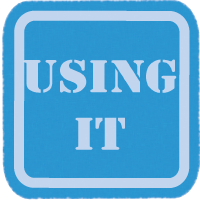
 Flexible Grouping: Individual, Pair and Group Working
Flexible Grouping: Individual, Pair and Group Working
Pair work, group work and individual work can all be effective, if used at the right times and if structured in an appropriate way. For teachers, pair work and group work can be excellent tools to promote student interaction; individual work, on the other hand is easier to assess and often appeals to students with intrapersonal intelligences. As a teacher it is important to vary groupings depending on the goals and context of the activity and it is important to know what supports to offer students for each situation. In this section we will discuss different ways to group students and how structure can be provided at each level. |
|
When should I use individual, pair and group work?
Type of Student Work |
Benefits |
Challenges |
When It Is Suitable |
Connections to Theory |
Individual
|
Students work at their own pace, they are confident about what they know and what they need to send more time on, they can use their preferred learning styles and strategies |
Students don’t get the benefit of learning from and working with their peers |
Giving it, Getting it, final tasks/assignment |
Deductive Learning, Learning Styles & Strategies, Gardner’s Multiple Intelligences, Vygotsky’s Zone of Proximal Development |
Pair
|
Students have the chance to work with and learn from their peers; struggling students can learn from more capable peers; it is especially useful for students who prefer interpersonal learning settings |
If students are not matched up well (i.e. low students together, high students together, a higher student with a low student but they don’t work well together, etc.) pair work won’t be useful; the ability of the students to work in this way needs to be taken into consideration |
Giving it and Getting it activities, Inductive learning activities |
Gardner’s Multiple Intelligences, Vygotsky’s Zone of Proximal Development, Inductive Learning |
Group
|
Group work provides more opportunity for practice, an increased variety of activities is possible, increased student creativity, the Zone of Proximal Development increases |
As with pair work, the groups must be carefully selected to ensure students can work productively; not all students are able to work to their full potential in this situation; assessment of student progress can be challenging |
Giving it and Getting it activities |
Gardner’s Multiple Intelligences, Vygotsky’s Zone of Proximal Development, Assessment for/of learning |
back to top
Why make use of these different ways of working?
Each type of work-individual, pair and group- has its place in the language classroom. As the above table shows, there are certain pros and cons of each approach, but all can be connected to theory dealing with effective language learning. Some activities and topics may be best suited to one particular style of work, but the key is to use variety and give students a sufficient number of opportunities to work and learn from one another.
A benefit of students working together is that, by explaining a concept or idea to peers, that idea or concept becomes clearer to the student doing the explaining.
Why is it important to share ideas with others in a group work setting?
- learning to be conscious of how you learn will help you to better understand how someone else learns
- becoming conscious of how you AND OTHERS learn will help you to understand better how your students learn
- becoming conscious also requires FOLLOW-UP action which is not always easy or quick
 |
Watch the video to see how this language teacher uses pair work in her classroom. (1:28) Note the ways in which she uses scaffolding to structure the activities. |
How should pair work be structured?
In order for it to be successful and a valuable use of class time, students need to be able to practice taking on each role to get maximum exposure with the material. For example, if students are practicing a two-person dialogue, each student should have a turn with each role. To take pair work one step further, the teacher should have students work on the same activity in different pairs; by working with several other students in the class, each student gets ample practice, they could make use of Vygotsky’s Zone of Proximal Development, and has the opportunity to hear and help other students with pronunciation.
Group making Ideas
We know that group work can be a useful tool in the language classroom but how should groups be chosen? Here are some strategies for forming groups in the language classroom:
Index Cards |
Put matching stickers on every set of two index cards. When it is time to choose partners or groups, put cards face down on a table and have students come up and pick a card. Students then find their sticker match. |
|
Numbered Sticks
|
Use tongue depressors and put a number on one end of each one - up to the number of kids in the class. Number the students in the beginning of the year as well. Keep the "sticks" in a cup, number down. When it's time for partner work, pull 2, or 3, or 4 (whatever size groups you need) at a time and those numbered kids work together. The "sticks" are also good for choosing who answers a question during a discussion. |
|
Puzzle Pieces
|
Cut the pictures from an old calendar, and have them laminated, then cut them into puzzle shaped pieces. Have the kids each pull a puzzle piece from a basket and then tell them to go find the other pieces to their puzzle and when their puzzle is complete to sit at a group of desks and raise their hands. |
What are some examples of good pair or group work activities?
| Map Quest | Students are both given a map (can be authentic or teacher made). One student asks for directions to a particular place on the map and the other student gives directions. Students switch roles and repeat activity. |
| Picture Description | Students work in partners and compete to draw the most accurate image. One partner holds an image in their hand and describes the image to the other partner who tries to draw the image. Once the image is competed partners can switch roles and repeat activity. |
| Blindfolded Directions | In partners, one student leads the blind-folded partner through an obstacle course by giving verbal directions. Students can switch roles and repeat activity. |
| Same/Different- Trouvez les differences | Spot the difference is a name given to a puzzle where two versions of an image are shown side by side, and the player has to find differences between them. For this partner activity the pair has to figure out what those differences are by asking each other questions. For second language learning it is important to choose or create images that incorporate vocabulary known by the student. By asking students to work in stages (5 differences at a time) they will be less likely to get overwhelmed and find the task more motivating. |









 Anna and Lily have observed their mentor teachers using different types of grouping with their respective students. Anna observed her mentor teacher using pair work to have the students practice certain concepts they were discussing in class whereas Lily observed her mentor teacher use individual seat work. What type of activity is better? Does it depend on the situation? The context? The students?
Anna and Lily have observed their mentor teachers using different types of grouping with their respective students. Anna observed her mentor teacher using pair work to have the students practice certain concepts they were discussing in class whereas Lily observed her mentor teacher use individual seat work. What type of activity is better? Does it depend on the situation? The context? The students?



